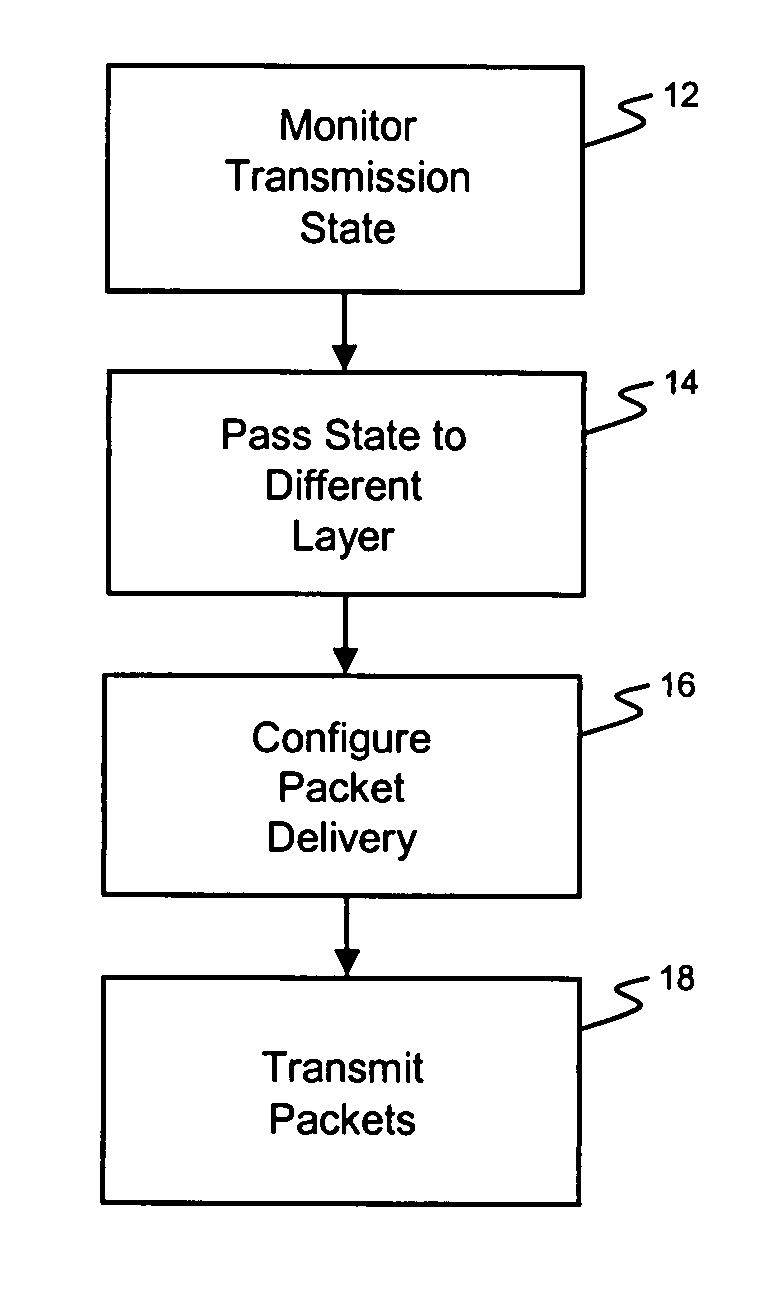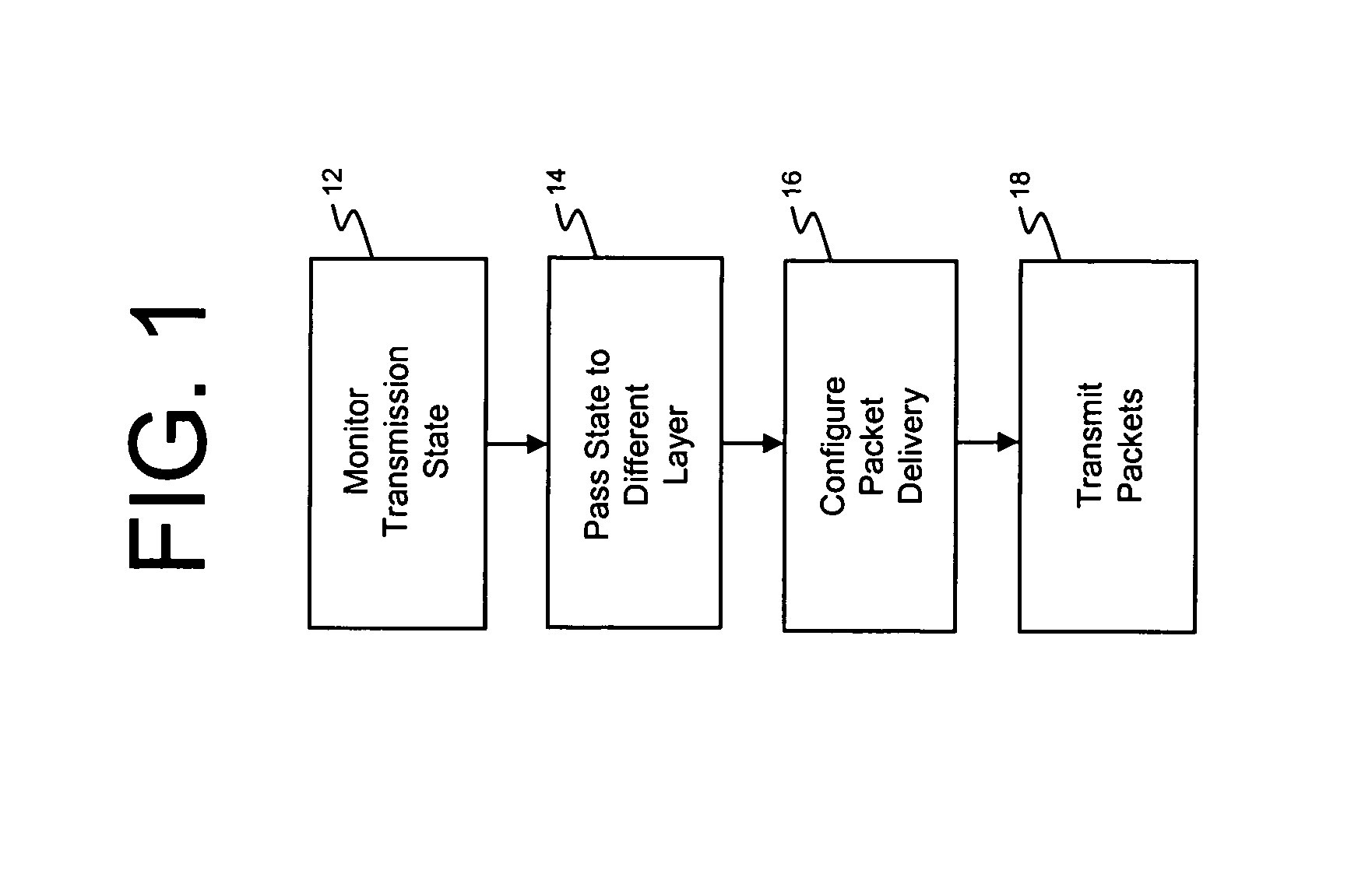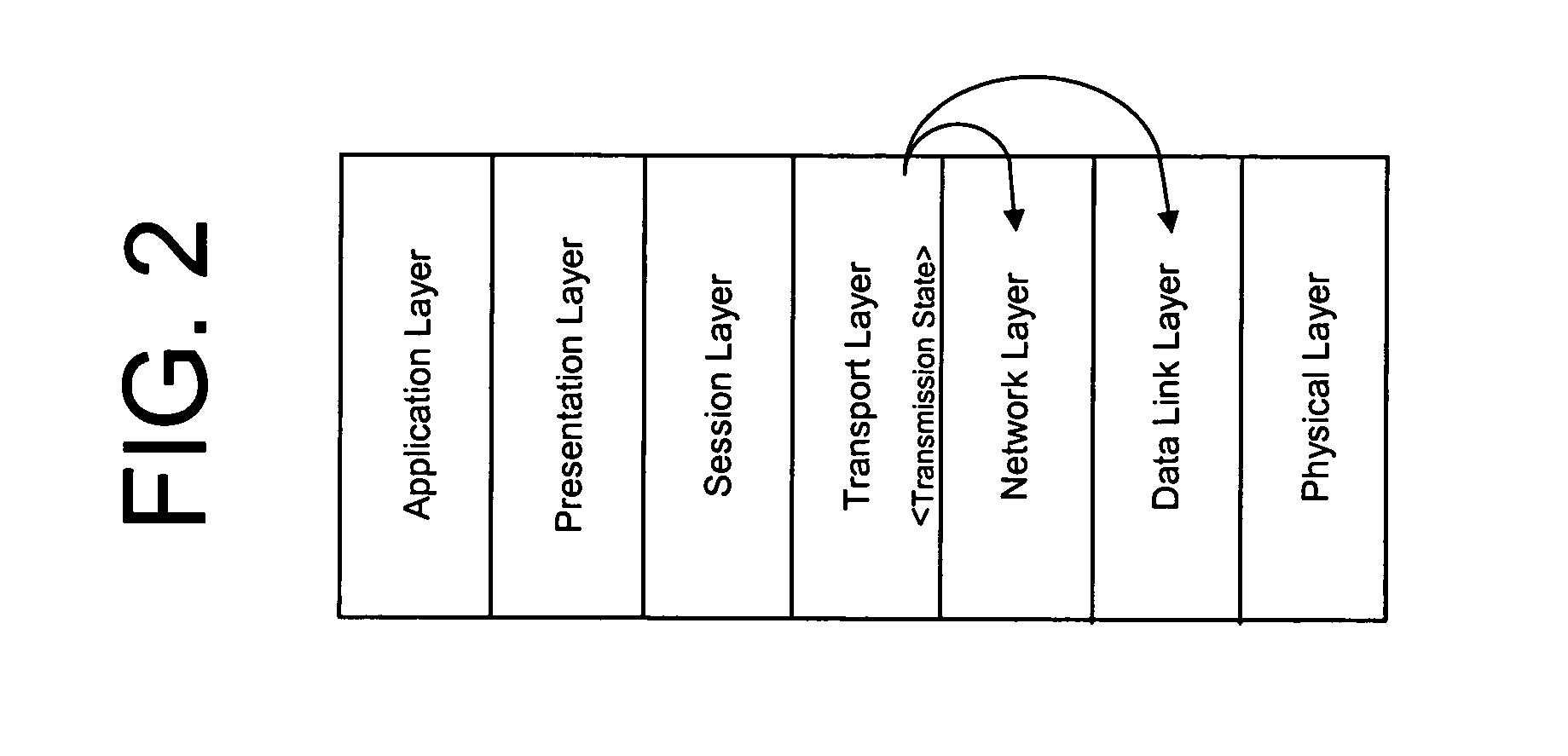Cross layer optimization for improving TCP performance in lossy wireless environments
a wireless environment and cross-layer optimization technology, applied in data switching networks, frequency-division multiplexes, instruments, etc., can solve the problems of serious impact on repeated aborting of the recovery procedure, and severe reduction of the throughput of the source, so as to reduce the loss of packets
- Summary
- Abstract
- Description
- Claims
- Application Information
AI Technical Summary
Benefits of technology
Problems solved by technology
Method used
Image
Examples
Embodiment Construction
[0010]FIG. 1 illustrates a method for reducing packet loss using cross layer information according to the principles of the present invention. In general, a transmission state of a network data source is monitored at step 12, where the transmission state is defined by a communication protocol operating at a transport layer of an Open System Interconnection (OSI) model. The transmission state is then passed at 14 from the transport layer to a layer below the transport layer (e.g., the network layer or data link layer) as defined by the OSI model. In step 16, data packet delivery parameters are configured at the lower layer based on the transmission state received from the transport layer prior to the packets being sent across the network at step 18. In this way, the network can provide fairer distribution of bandwidth amongst data source competing for congested links.
[0011] Transport Control Protocol (TCP) is a well known communication protocol that operates at the transport layer (...
PUM
 Login to View More
Login to View More Abstract
Description
Claims
Application Information
 Login to View More
Login to View More - R&D
- Intellectual Property
- Life Sciences
- Materials
- Tech Scout
- Unparalleled Data Quality
- Higher Quality Content
- 60% Fewer Hallucinations
Browse by: Latest US Patents, China's latest patents, Technical Efficacy Thesaurus, Application Domain, Technology Topic, Popular Technical Reports.
© 2025 PatSnap. All rights reserved.Legal|Privacy policy|Modern Slavery Act Transparency Statement|Sitemap|About US| Contact US: help@patsnap.com



